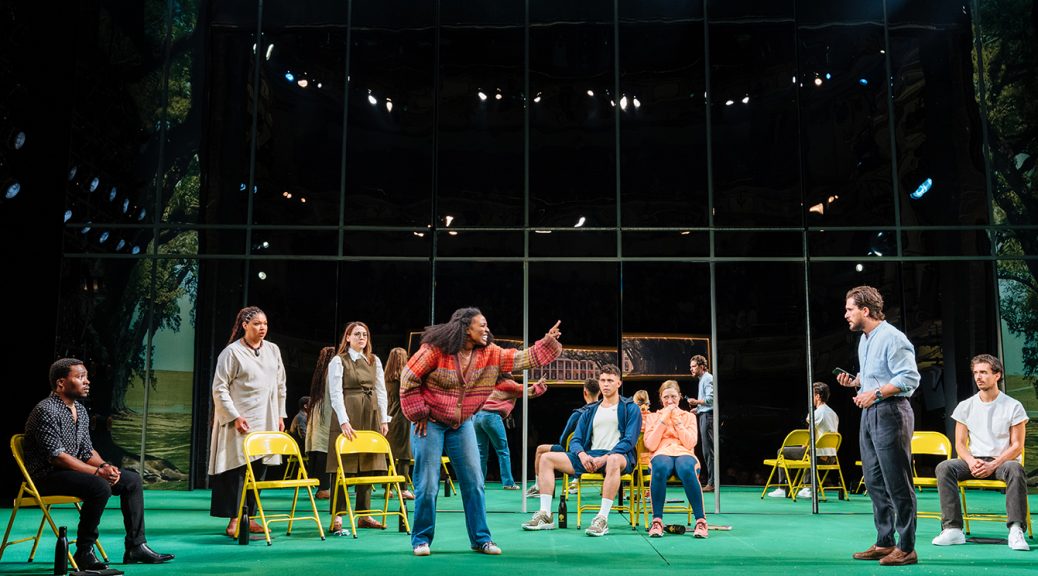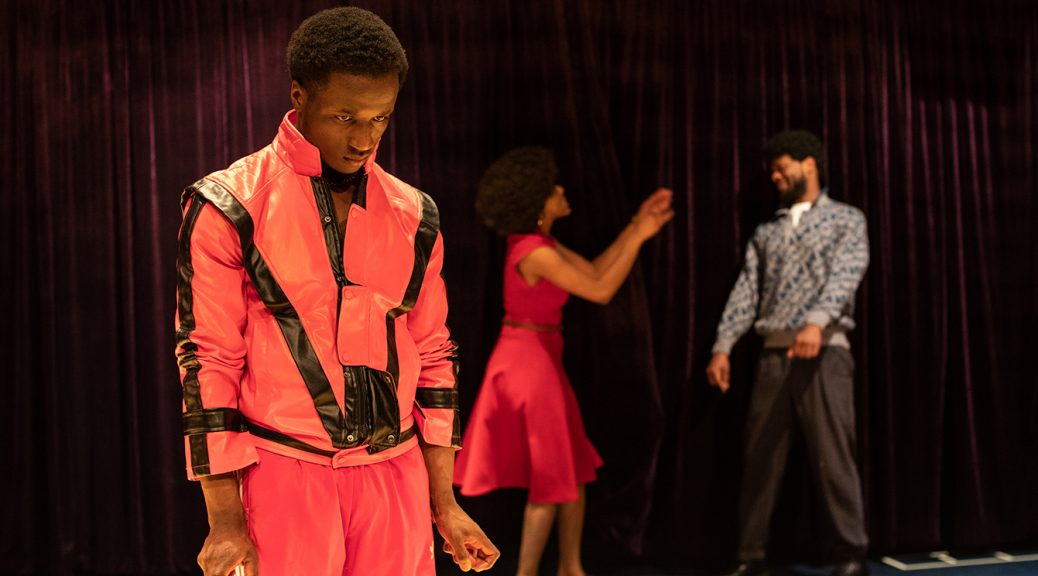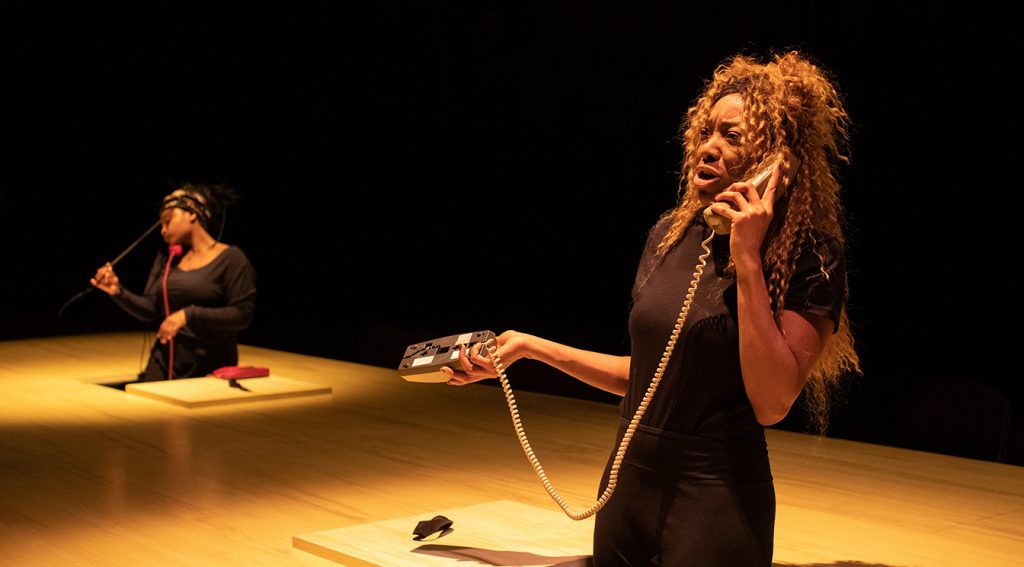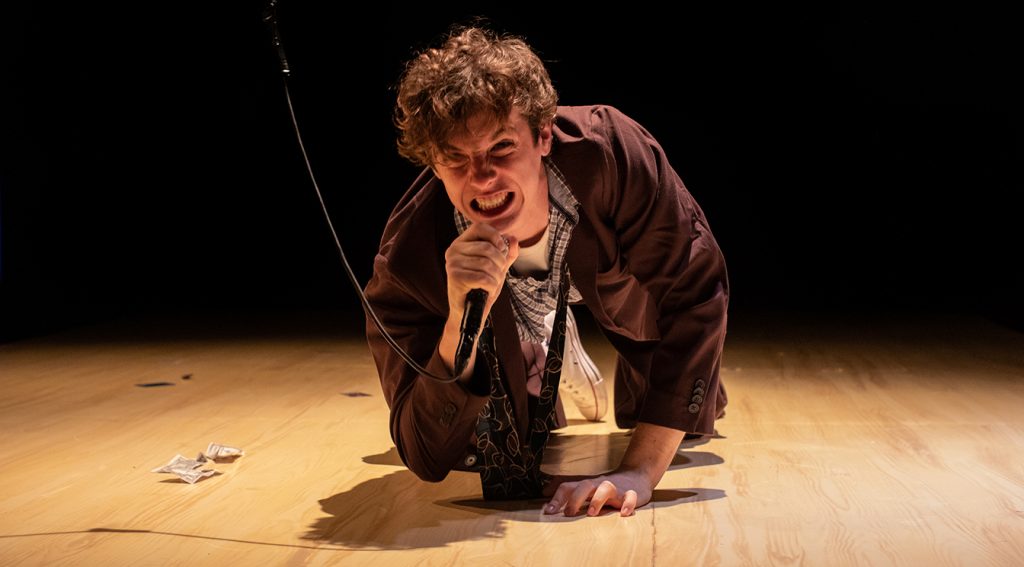The anticipation surrounding the London premiere of Jeremy O Harris’ 2018 play is possibly to its detriment. As one the most Tony award-nominated works of all time, with a policy of “black out” performances that has garnered plenty of press, expectations are high. There is plenty to praise – not least excellent performances – with a script full of ideas and conviction. But there might also be a little disappointment.
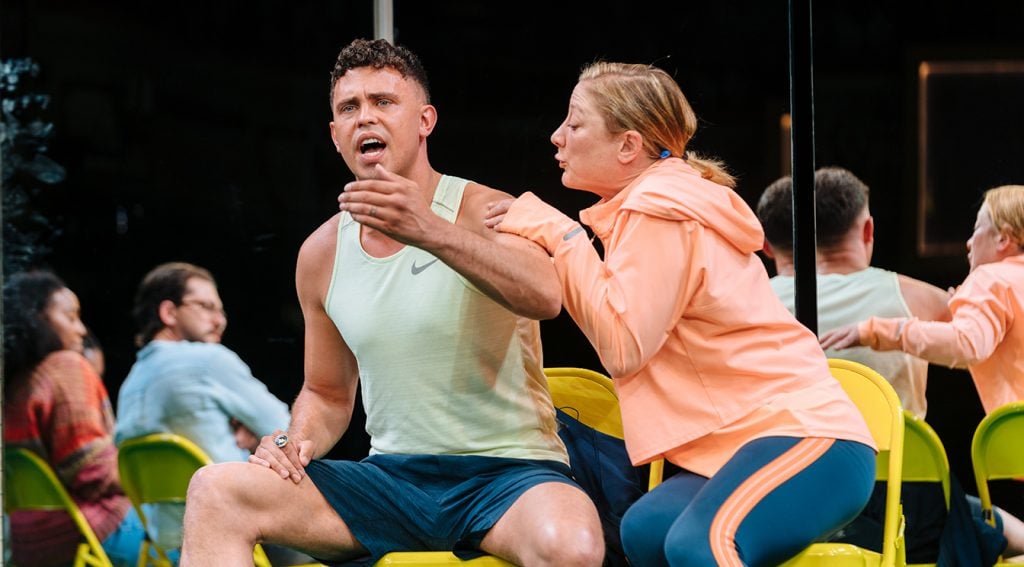
Slave Play is long and just a little slow. While Robert O’Hara’s direction is focused, and the acting riveting, the structure is laboured. There are three mixed race couples, each acting out role plays with overtly racist themes. It’s fun to see the fantasies slip (Aaron Heffernan and Annie McNamara do especially well with this), and to see how ideas about eroticism vary and move from awkward to traumatic. Trouble is, we get it in triplicate.
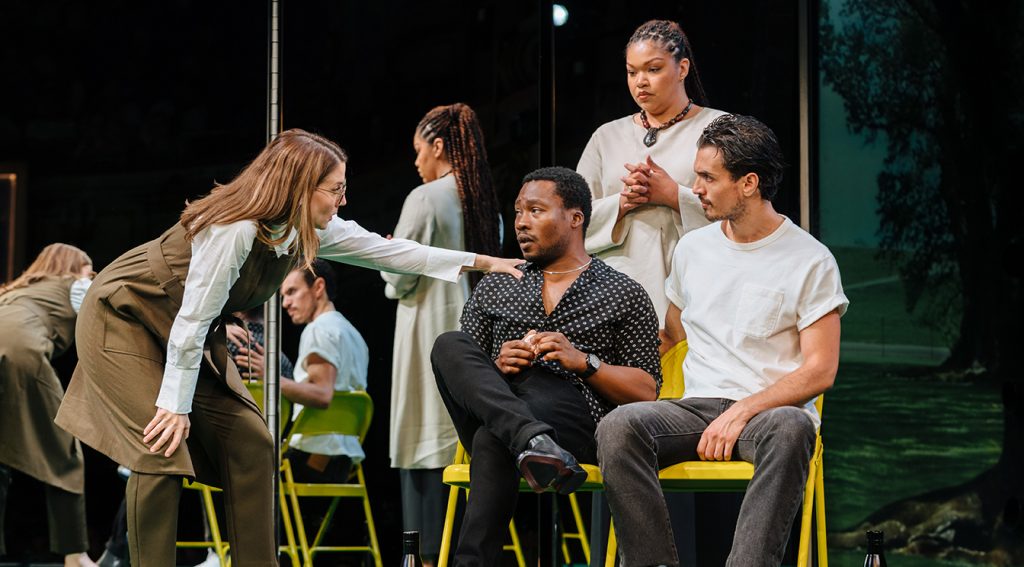
It turns out all six are enacting ‘Antebellum Sexual Performance Therapy’ and they are being supervised! It’s a great twist. But as we are introduced to a fourth couple, researching how race affects relationships, everyone has an awful lot to say. Chalia La Tour and Irene Sofia Lucio play these roles broadly and are very funny. But as all the characters fight against anhedonia and alexithymia, the satire is blunt. And it isn’t a surprise when one couple, played brilliantly by Fisayo Akinade and James Cusati-Moyer (who get tears as well as laughs), end up splitting up. Harris allows us to be sceptical with skill, but makes the audience work hard.
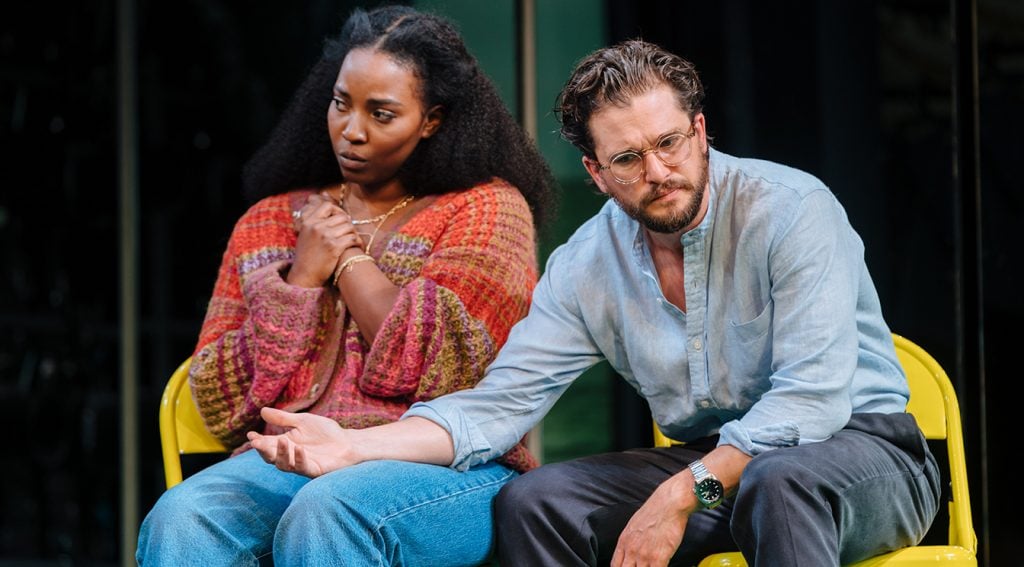
Turns out our focus is the final couple: Kaneisha and her British husband Jim, played by Olivia Washington and Kit Harington. The latter might have a little too much to do, although Harington’s performance is commendable. Jim is the most reluctant to engage in everything going on, taking particular objection to the term “process”, yet he is not quite complex enough to convince. But this final scene is extremely powerful, almost a monologue for Washington, and brilliantly delivered, with Harington nude for a long time. It brings a lot of clarity to the project – with the need to be listened to the important takeaway.
While the “raw and nasty” of this therapy is relative, and the middle-class milieu is well observed, any resolution seems slight. None of the characters is a monster, but they do all seem entitled. And there’s a lot of OCD – the fascinating idea that music triggers the characters leads to the production’s startling sound design and brilliant work from Lindsay Jones. I just wonder if they don’t all come across as a bit barmy? Maybe the potential to dismiss their pain is the play’s challenge?
While valid and important, how interesting somebody else’s therapy is might be a problem, especially if you are being served three doses of it. It seems obvious that Harris wants to make a wider point. That’ll be the reason for a cross-section of couples. What you get from such a lot of material depends on your own circumstances. It will be interesting to see how the play is received in the UK, and by people better qualified than I. But with so much to listen to, Slave Play should do well as a conversation piece… Maybe it really is the process that counts.
Until 21 September 2024
Photos by Helen Murray

